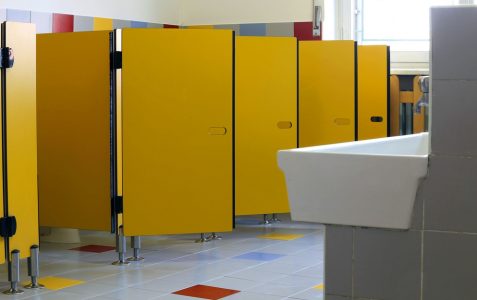The self-powered Internet of Things – wireless sensors are the key to networked buildings
Issue :
read all articles online
read as pdf
Data Power for Smart Buildings
The average time between breaking ground and tearing down a building is up to 100 years, which is the typical lifespan of a building. Of course, to keep earning a profit – especially in the case of commercial buildings – money must be regularly invested in maintenance and modernization.
Thanks to digitalization, facility management companies are currently facing a radical technological transformation. Tenants in office and other commercial buildings now often expect completely new services and flexibility. While classic technical building automation systems with automated control of blinds and temperature remain important, modern work environments demand more. And this is where the opportunity for new business models can be found.
The goal is to link building automation systems with the Internet of Things (IoT) and thereby collect data that permits completely different services. New facility management roles already reflect this very development. Corporate real estate management (CREM), for example, deals with in-house real estate resources and how they can contribute to company profits. The point is no longer simply to manage the property but to actively establish a separate business field. IoT can make a valuable contribution to achieving this goal.

Upgrading to the IoT – but how is this done?
When it comes to IoT retrofits, you don’t need a crystal ball to back the right horse. The technology needed to upgrade existing buildings and plan new ones with a view to the future already exists today. Wireless sensors that communicate with gateways over radio links form the basis for building digitalization. They collect the raw data and deliver it to IoT platforms for storage, processing and evaluation. The major suppliers of cloud-based platforms include IBM Watson, Microsoft Azure, Amazon Cloud, Google Cloud and Apple iCloud®.
Suitable applications and dashboards give facility managers a real-time, 360-degree view of their building and its use as well as its history. The wireless sensors from EnOcean can be flexibly placed all over the building, on furniture or objects such as printers, coffee makers, etc. Because they are self-powered, they also require no maintenance. Thanks to this combination, the self-powered solutions are ideal for upgrading existing buildings, which make up the lion’s share of the market. Flexibility and the ability to add a radio-based system are important considerations for new buildings. So far, so good. But what exactly can building operators do with this knowledge?

A practical checklist of application examples
The following application areas have emerged, in which the IoT contributes added value to building management:
– Space and room utilization
– Restroom management
– Predictive maintenance
– Energy optimization
– Asset management
These areas are unified by the business goal of maximizing building utilization while minimizing costs, especially in expensive metropolitan areas. The use of rooms and equipment according to new work environment concepts is a good example of this.


Sanitary facilities at a glance
Clean toilets, filled soap dispensers, sufficient fabric towels and toilet paper – this is the ideal state of sanitary facilities. In fact, use and consumption can be difficult to predict. Of the sanitary facilities are equipped with sensors, the building operator receives transparent, detailed information about the quality of the cleaning service.
New ways of working
Modernizing office work environments has long been driven primarily by IT. However, designing these spaces requires collaboration across the board. Not only the HR department but also facility managers are therefore increasingly involved in implementing new work environments. Such concepts focus on flexible and attractive workplace design and the productivity improvements associated with this. The success of these projects depends on how well they are accepted by employees. Easy-to-install wireless sensors supply the appropriate data to enable the measurement and optimization of the use profile of workspace and devices.

Wireless sensors form the basis for room use
Motion sensors (passive infrared or vibration) detect the necessary raw data. Cameras for the alternative counting of people are associated with a great many disadvantages, such as data privacy concerns and the high cost of installing the necessary power cables.
The benefits of a radio-based sensor solution for counting people, such as the one offered by EnOcean partner Thing-it, are obvious: Wireless sensors operate without cables and are thus extremely economical to install. In particular, the EnOcean sensors use energy harvesting technology, which means that they operate without batteries and obtain their energy from the ambient light. As a result, they require no maintenance.
Systematic readjustments
Thing-it has developed an algorithm that determines how many people are present as well as their locations based on the use and activity profiles of the EnOcean sensor. The algorithm calculates the room capacity utilization on this basis. Locations that are not well utilized, such as an out-of-the-way conference room, can be upgraded, adjusted in size, or a completely new use for the room may be considered. Or it might also make sense to introduce a hot desking concept. If it turns out that many desks remain unoccupied a great deal of the time, a sensor-based management system can help improve the room’s use.

Wireless asset management
Radio-based solutions with vibration sensors offer high added value with little effort in the area of asset management. The collected data can be used to check the utilization of many pieces of equipment, such as printers and projectors. As a result, the printer can be placed in another, more accessible location. A projector that has hitherto not been used is moved to a different conference room.
Paradigm shift in building automation
Future building use concepts require vast quantities of sensor data in order to continuously analyze and optimize use and operation. This data forms the basis for new service models that complement the existing building automation paradigms with lasting effect. Considering the many subsystems, international standards and market requirements, in particular, interoperable sensor concepts as well as modular overall IoT systems are urgently needed.
The EnOcean ecosystem of more than 400 globally active companies in the building sector, which have come together to form the EnOcean Alliance, is particularly well positioned here. Interfaces, among other things, are defined within the Alliance. For companies, the interoperability gained means that future-oriented investments can be made in IoT projects, since the systems and solutions can be added to at any time and networked with products from different manufacturers.
New articles in Smart Spaces
Top articles





